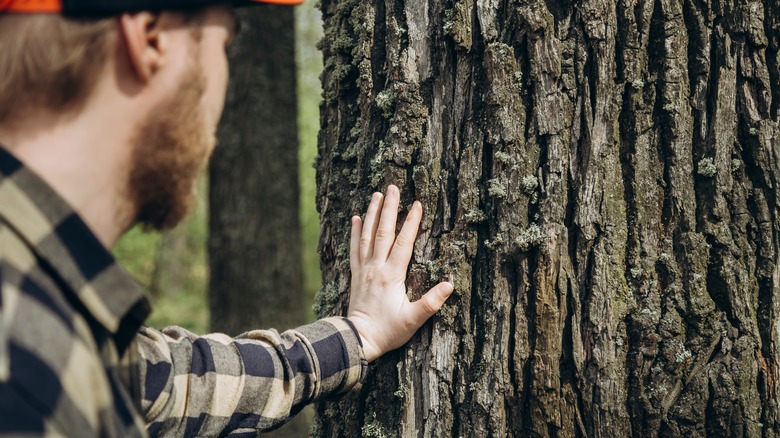What Knots In Your Tree Are Trying To Tell You
Trees are an invaluable resource that serve many purposes for homeowners. From adding value to your property to providing some privacy in your yard, trees can be beautiful additions to an outdoor space. But, did you know we can actually decipher a tree's health by examining the knots on its trunk? Those often distinctive bends, swirls, and bumps on tree trunks can actually tell us, their caretakers, a whole host of information about their current state of being. Some things are hardly cause for alarm, while other knot formations may be an indication of something much bigger that'll cause a headache now or later.
While some knots are the result of natural growing processes, like bark enclosing around old dead branches on the trunk while it continues to grow upwards, every once in a while knots can be a sign of distress or injury. When that happens, it forms a burl, a kind of knot that's like a permanent scab, healing a tree's wound. Trees can experience a variety of stressors, from axe cuts to fungal infections to root disruptions. At the site of said injury, infection, or other stressor, the burl forms to help mend the tree's overall health.
The idea of knots and burls may seem a little scary. And while it may point to big maintenance on the homeowner's part, like eventual removal from disease, it doesn't necessarily equate to all doom and gloom. In fact, it's a sign that your tree is healing, and it's quite a natural part of tree growth.
Why knots aren't all bad, but how you can avoid them
Regular old knots are normal in a tree's life, and even the appearance of burls aren't necessarily all that bad. Oftentimes, burls and knots actually make for beautiful inclusions in wood utilized in home design and furniture, since it makes the grain look uniquely marbled. But understandably, homeowners may want to attempt to prevent burls since that means warding off stressors and disease.
Tree caretakers can try to limit disease, and therefore burls, by keeping tree trunks dry. Humidity possibly increases the chance of burls, so if you live in a damp locale, then it may behoove you to choose trees with appropriate hardiness. Prevent stressors on your trees in the first place, by avoiding the common mistake of using incompatible trees around your patio or in your yard. In the interest of caution as well, ensure your trees are planted far enough away from your home in case the burls on your tree are a sign of incurable disease and require removal. It'll make your life a whole lot easier if you plan ahead!
All in all, knots and burls are very normal and are even desirable in some cases. Just keep an eye on your burls for any indications of something more concerning to come – signs of decay, rot, insect infestations — but for the most part, your tree will continue healthily growing despite knots and burls. It may just have some added character, but that's all a part of the story its trunk can tell us.

